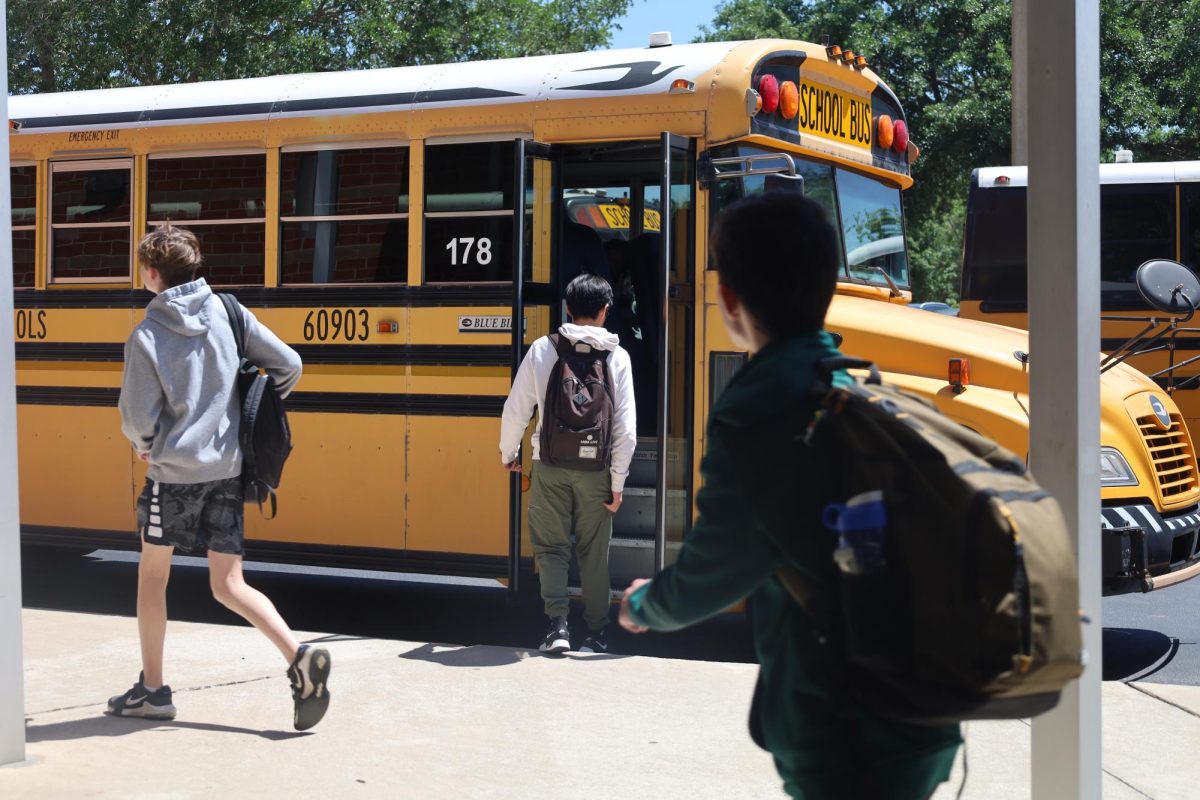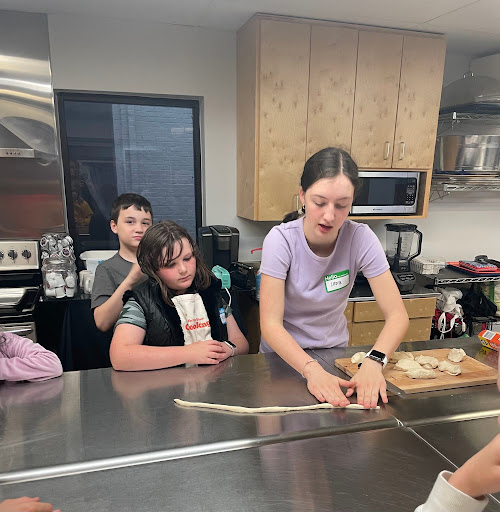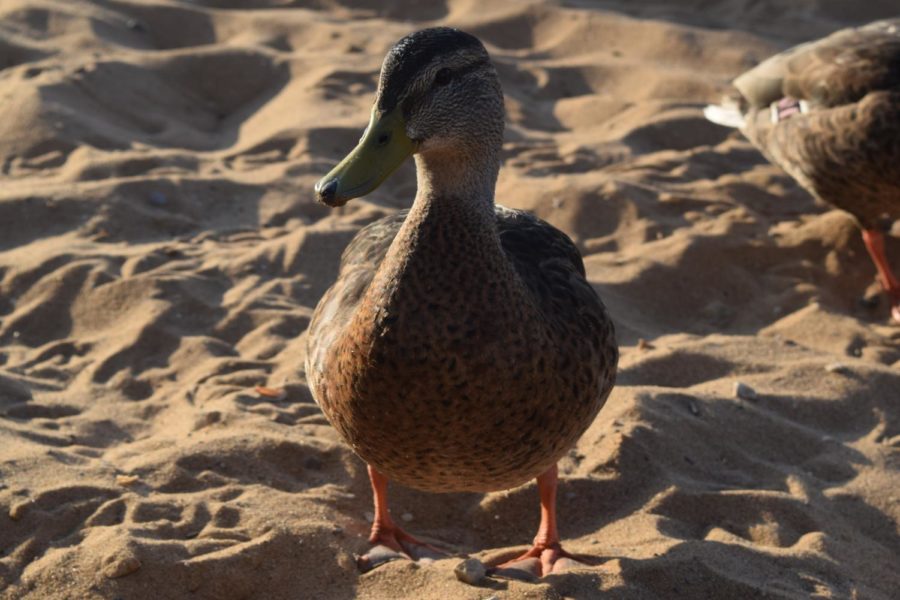When I was in elementary school, my dad’s greatest mortal enemy was a cat called Salem.
My dad has never been a cat person, but Salem was possibly the animal he hated most. He would spot Salem in the backyard and seize my mother’s garden clogs to hurl at the cat – never trying to actually hit him, just sending a message. For one birthday, my mom bought him a Super Soaker water gun to scare Salem away. I’m not sure he ever used it, but the sentiment was there.
My dad is one of the most animal-loving people you’ll ever meet. He’d never intentionally hurt any creature, not spiders or rabbits or biting assassin bugs. He even used live traps on mice. And he wasn’t trying to harm Salem, at least not seriously. But his reasons for antagonizing Salem were valid.
According to the American Bird Conservancy (ABC), domestic cats are the greatest human-made threat to wild birds in the U.S. and Canada, surpassing car accidents and hunting. They kill 2.4 billion birds every year, and have contributed to the extinction of at least 63 species. In the face of avian biodiversity, cats are a menace.
Salem was a black shorthair cat who lived across the street. He had an owner and a house to live in, but spent most of his time free-roaming the neighborhood. He would show up in our backyard nearly every day, often crouching below our birdfeeders, waiting for unsuspecting birds. He huddled under our deck and climbed our trees. We saw him carry away mourning doves, finches, and blue jays.
For years, my dad was those birds’ greatest defender. He would fiercely hit the deck with a broom to scare Salem out from under it. My mom’s clogs remained beside the back door constantly, our greatest weapon against the feline crusader. My dad did what he could, but Salem kept coming back. The cat even launched himself into the hanging plant on our porch once, terrorizing a nest of baby birds before my dad noticed and scared him off.
It was a constant problem, and we were only one yard in a neighborhood full of free-roaming cats and songbirds.
Salem and his family have since moved away, but other cats frequent our yard regularly. For birds, this is a major threat, but it’s one cat owners can manage.
Cats are natural predators. ABC explains that there is no way to curb cats’ natural hunting behaviors. Just like they will chase laser pointers and toys, they will chase a bird or a rabbit, even if they’re well-fed. But cats are not predators who naturally exist in ecosystems. Just as invasive species of plants, fish, and insects choke out native animals, cats are capable of doing the same. And as one Washington Post article by Juliet Eilperin stated, some free-roaming pet cats will kill around three dozen birds a year. Together, these cats kill billions of birds, choking populations and making habitats hostile. The high kill rates cats have is just one facet of the problem; ABC also says that the stress of the nearby presence of cats can threaten the health of nests and young birds, decreasing the number that grow to adulthood.
Birds are vital to ecosystems, mitigating the populations of both their predators and prey and acting as pollinators, according to Endangered Species International. The decline of birds around the world has threatened countless ecosystems. So it’s vital that we do what we can to protect them.
So how do we fix the problem? Well, according to a Smithsonian Magazine article by Rachel Gross, part of the solution is simple: bring outdoor cats inside, where they can’t damage local biodiversity.
This actually benefits the cats, too. Studies have shown that while indoor cats typically live around 10 or 15 years, outdoor cats tend to live only around two to five years – less than 30% of the lifespan of their indoor counterparts. This is due to many factors – disease, cars, or extreme weather conditions, to name a few. But regardless, it’s much safer for cats and the natural ecosystem to keep them indoors.
Of course, that solution isn’t the end-all-be-all. According to a 2012 study by Scott Loss, Tom Will, and Peter Marra, around 69% of cat-caused wild bird deaths are actually because of un-owned, or stray, cats. There are tens of millions of un-owned cats in the U.S., and solutions to that are heavily debated and range from mass-sterilization to mass-euthanasia. Whatever tactic used, solving the stray cat problem will likely take decades.
But with its potential to kill upwards of 30 birds per year, just one household’s cat can make or break the bird population in a neighborhood. Whether or not your cat is free-roaming can determine if birds are able to seek refuge in nearby trees during the winter, eat from the neighbors’ bird feeders, or roost during their migration patterns. As bird habitat shrinks and migration becomes increasingly difficult, invasive predators like domestic cats can be a big determining factor in where birds are still able to exist.
Many threatening factors facing bird populations today are difficult to control, especially on an individual level. But this one is not. Indoor cats can preserve populations.
Cat owners, just like every animal owner, have a responsibility to keep ecosystems intact. When cats are kept inside, it can eliminate the largest human-made threat to bird populations in North America, and potentially keep millions of birds alive every year.
This story was originally published on Union Street Journal on February 28, 2023.






![It was definitely out of my comfort zone to get [the dress] and decide I loved it enough not to wait and risk not having something that memorable.](https://bestofsno.com/wp-content/uploads/2024/04/Precious_20180902_JRS_00008_ed1.jpg)


![Sophomore Sahasra Mandalapu practices bharatanatyam choreography in class. These new dances will be performed in an annual show in February. Mandalapu found that practicing in class helped her overcome stage fright during her performances. “When [I] get on stage, Im nervous Im going to forget, even though Ive done it for so long,” Mandalapu said. “Theres still that little bit of stage fright [when] I second-guess myself that I dont know it enough, but I do because Ive been practicing for a whole year.”](https://bestofsno.com/wp-content/uploads/2024/05/Sahasra-6-Large-1200x844.jpeg)

![In their full runway outfits, (from left) Audrey Lee 25, Olivia Lucy Teets, 25, Fashion Design teacher Ms. Judy Chance, and Xueying Lili Yang pose for a photo. All three girls made it to Austin Fashion Week by getting in the top 10 in a previous runway show held by Shop LC.
[I like my students] creativity and how they can look at a fabric and make it their own, Ms. Chance said.](https://bestofsno.com/wp-content/uploads/2024/04/IMG_9686-e1714088765730-1129x1200.jpeg)














![IN THE SPOTLIGHT: Junior Zalie Mann performs “I Love to Cry at Weddings,” an ensemble piece from the fall musical Sweet Charity, to prospective students during the Fine Arts Showcase on Wednesday, Nov. 8. The showcase is a compilation of performances and demonstrations from each fine arts strand offered at McCallum. This show is put on so that prospective students can see if they are interested in joining an academy or major.
Sweet Charity originally ran the weekends of Sept. 28 and Oct. 8, but made a comeback for the Fine Arts Showcase.
“[Being at the front in the spotlight] is my favorite part of the whole dance, so I was super happy to be on stage performing and smiling at the audience,” Mann said.
Mann performed in both the musical theatre performance and dance excerpt “Ethereal,” a contemporary piece choreographed by the new dance director Terrance Carson, in the showcase. With also being a dance ambassador, Mann got to talk about what MAC dance is, her experience and answer any questions the aspiring arts majors and their parents may have.
Caption by Maya Tackett.](https://bestofsno.com/wp-content/uploads/2024/02/53321803427_47cd17fe70_o-1-1200x800.jpg)
![SPREADING THE JOY: Sophomore Chim Becker poses with sophomores Cozbi Sims and Lou Davidson while manning a table at the Hispanic Heritage treat day during lunch of Sept 28. Becker is a part of the students of color alliance, who put together the activity to raise money for their club.
“It [the stand] was really fun because McCallum has a lot of latino kids,” Becker said. “And I think it was nice that I could share the stuff that I usually just have at home with people who have never tried it before.”
Becker recognizes the importance of celebrating Hispanic heritage at Mac.
“I think its important to celebrate,” Becker said. “Because our culture is awesome and super cool, and everybody should be able to learn about other cultures of the world.”
Caption by JoJo Barnard.](https://bestofsno.com/wp-content/uploads/2024/01/53221601352_4127a81c41_o-1200x675.jpg)





